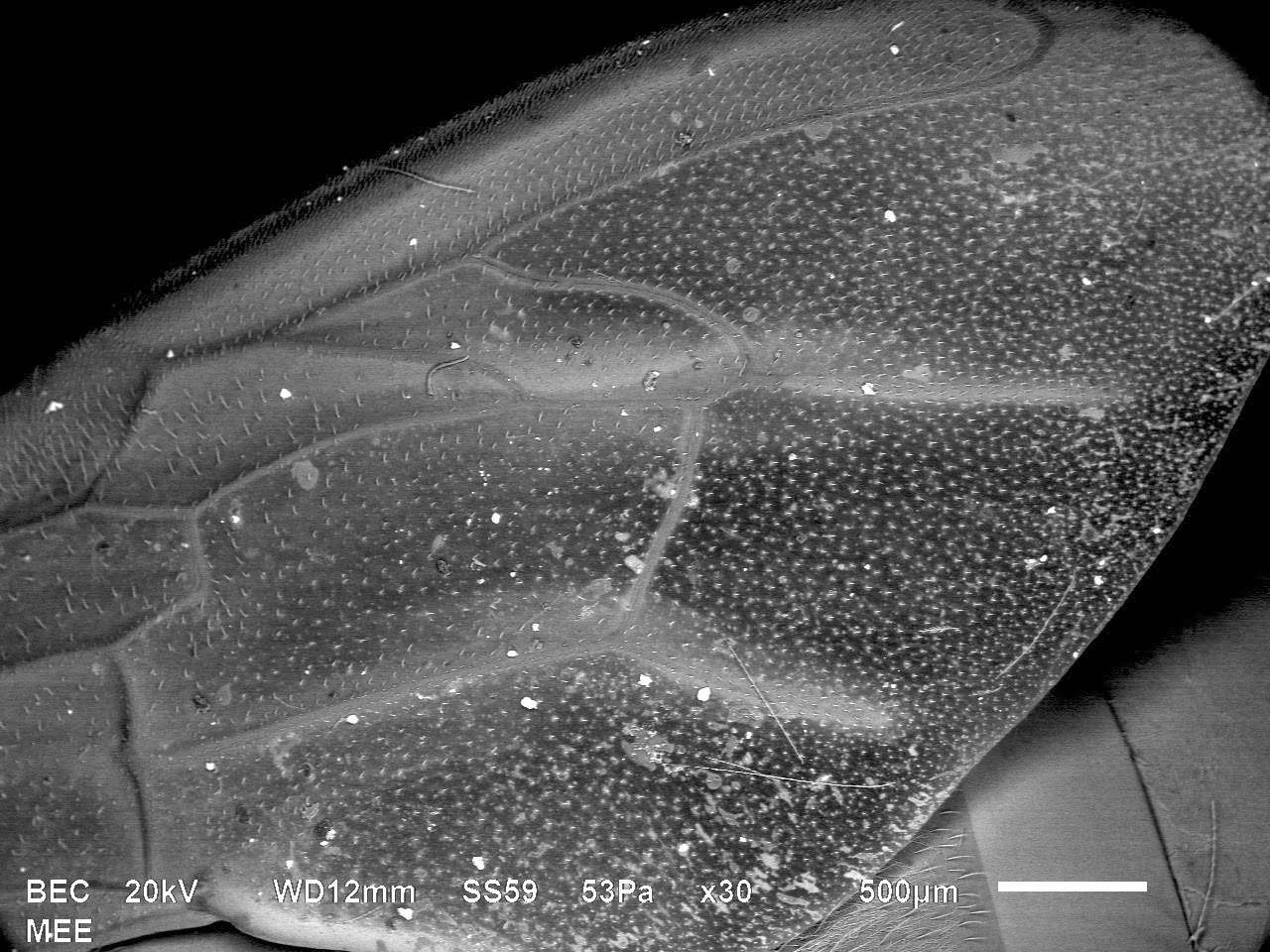While you're looking at these pictures thinking "I can find a million way better pictures of bees on google images," remember that I'm doing this blog for fun, so quit complaining. And I bet you never thought to look up high mag images of bees, so here are a few to get you started.
Also you may notice that a lot of the bee images on google are in color, much better quality, and possibly higher magnification. This is because most of those bees didn't drive from St Louis to Ames, IA to Minneapolis in a plastic bag with 15 other dead bees. They probably had someone who knows how to prepare bees for SEM imaging (i.e. not me) and also knows how to add color to black and white images (i.e. also not me).
Well, folks, you get what you pay for. Enjoy!
First up, bee eye. The bee eye and the honeycomb (which was not interesting at all at high mag, unfortunately) are both made of small hexagons...coincidence? Side bar: all but one of my posts have now somehow included hexagons...weird.
Zoom in, ENHANCE! Aren't you glad you don't have tiny little hair coming out of your eyes?
Ugh, I just noticed that lighter rectangle in the center-right of the image, sorry. 1,000,000 bonus points to anyone who can tell me why that rectangle is there.
The wings are really interesting. Bee wings don't flap in a conventional "fixed wing" motion. This apparently created some confusion among early scientists, who thought that that bee flight was aerodynamically impossible due to the relatively small size of the wings compared to the body. They also have special muscles that allow them to flap their wings ~200 times per second. COOL!
Here is a video of some slo mo bee flight
Here is a video of some slo mo bee flight
In 5 minutes of internet searching, I was not able to find any reputable facts about why these hairs (that's what I'm calling them anyway) exist. If any of my entomologist friends know for sure, I'd love to hear.
Random Bonus Image! Guess what it is, and you get the satisfaction of knowing that you're better than everyone else at guessing what random objects look like at high magnification.
Hint: It is not part of a bee.
Thanks for reading, stay warm out there!
(another fun fact: during the winter, bees vibrate their flight muscles without moving their wings to stay warm)






Is the bonus image a particle of pollen?
ReplyDeletenope, someone got it on facebook. It's a slice of bread (multi grain)
DeleteAlso: I claim my 1,000,000 bonus points: it's beam damage
ReplyDeleteYeah, I figured there would be a few people reading this who have actually used and SEM before. You're tied for the lead in bonus points!
Delete